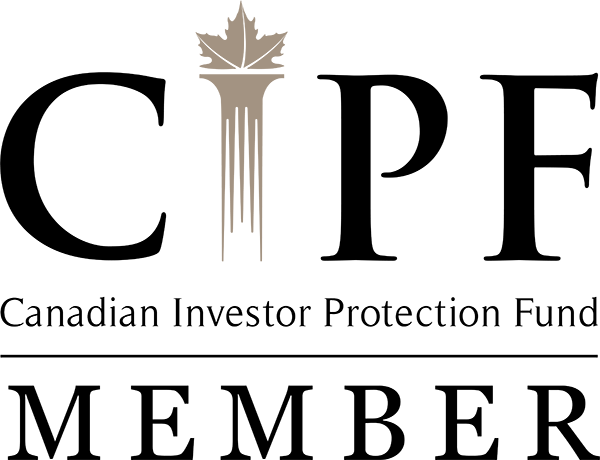Can you Turn an IRA to an RRSP?
By Tiffany Woodfield, CRPC®, Dual-Licensed Financial Advisor (Canada and USA)
ARTICLE READ TIME: 5 minutes
You’re planning a move to Canada or you’ve already moved, and you’re wondering if you can move a 401(k) or IRA to an RRSP and what the tax implications might be. In this article, we’ll cover the basics you need to know about turning an IRA into an RRSP.
Cross border tax is incredibly complex. The information in this article is not intended to provide tax or legal advice. You should always consult with a qualified tax advisor before acting on any of the information for your particular circumstances.
Can you turn an IRA into an RRSP?
You have the option of transferring an IRA into an RRSP, but you should be aware that there are tax implications.
Here U.S. tax advisor, Mia Bent CPA, CA, explains what to watch out for when transferring an IRA to an RRSP:
The withdrawal from the IRA will be taxable as income. If you then roll the funds into an RRSP it is possible that the overall transaction can be “tax neutral” but only in a narrow set of circumstances. In addition to paying US tax on the IRA withdrawal, a Canadian resident will also report the withdrawal as income on their Canadian return. They can then use the US tax paid as a foreign tax credit against the Canadian tax on the IRA income. In addition, the taxpayer will get a deduction for their RRSP contribution if they then roll the funds into an RRSP. They can use this RRSP deduction on their CDN return to reduce the tax on their other income, as well as any tax on the IRA income that the foreign tax credit didn’t fully offset. If the taxpayer can fully utilize both the foreign tax credit and the RRSP deduction then the overall transaction may be “tax neutral”, meaning that although they paid US tax on the IRA withdrawal they saved an equal amount of Canadian tax. If the taxpayer cannot fully utilize both the foreign tax credit as well as the RRSP deduction, they are at risk for being double taxed when they withdraw the funds later from their RRSP.
Careful planning is required prior to doing a rollover so speak to a qualified tax advisor to fully understand your particular situation.
What to do instead of turning an IRA into an RRSP
Another solution that does not result in paying extra tax is having your IRA managed from Canada with a dual-licensed cross border advisor.
For example, Mary, a retired nurse, accumulated substantial assets in her 401(k), and then once she retired, she rolled the assets into an IRA. A few years later, she moved to Canada; when she updated her address, she received a letter from her US brokerage firm stating they can no longer manage her account as she is a non-US resident. After much stress and research, she found a dual-licensed advisor that could manage her IRA in Canada. This meant she avoided having to collapse the account and incurring a major taxable event. If she moved back to the US, she could also still have the IRA managed by the same advisor as they are licensed in both countries. The advisor was also familiar with government pensions in Canada and the US, making retirement planning a lot easier.
A Strategy Where You Pay Tax Later
A traditional American IRA and Canadian RRSP are designed by their respective governments to help you save money and defer taxes until you take the money out. They work similarly in each country but the tax complexities arise when you move across the border. To understand how it works here is a simple example:
Example:
Mike is a retired engineer and he has contributed to his 401(k) plan and IRA for the past 20 years. He has contributed pre-tax money, and his earnings have grown tax-free. He hasn’t paid income tax on the investment growth until he decides to take money out.
Now that he is retired he will be in a lower income bracket, and he has decided to start taking money out to supplement his lifestyle. As a US person, the IRS will tax him at his graduated tax rate. As long as he is over the age of 59.5, he will not pay a 10% penalty on the money he is taking out. This scenario is very typical when living, and working in the US.
But now what happens if Mike plans to retire and move to Canada?
He can move his registered US plans to Canada and keep his IRA intact as long as he works with a dual-licensed financial advisor. The plans will continue to grow tax-deferred. This means that he will pay tax only when taking the money out.
What happens when he takes the money out?
If Mike is a dual citizen or long-term green card holder he will have to continue to report his income to the IRS even if he moves out of the country. As a Canadian resident, he will also have to report his income, including the money he takes out of his IRA, to the Canada Revenue Agency (CRA). Luckily, the Canada-United States Income Tax Treaty is designed to protect individuals from being double-taxed on the same income in the same year.
When taking money out of your registered retirement account you can usually avoid being taxed in both countries by using foreign tax credits. A cross-border accountant can help you with this.
Strategies for Canadians with Plans to Retire in the US
If you’re Canadian and planning to retire in the US, and therefore becoming a non-resident in Canada for tax purposes, the first step before you move is to speak to a qualified cross-border accountant. They can help you to prevent an unknown taxable event.
On the investment side, many Canadian financial institutions will require you to close any non-registered accounts before departing Canada. For registered accounts such as an RRSP, you cannot roll it into an IRA. However, the RRSP remains tax-deferred for Canadian tax purposes, and it will also be tax-deferred in the US for Federal taxes. It is important to note that some states may tax the RRSP income annually, so it is best to speak to a cross-border accountant about this.
Moving Your Retirement Plan from the US to Canada
As a US citizen moving to Canada with a 401(k) or IRA, it is usually not recommended to transfer your accounts to an RRSP because of the tax liability it creates. This also applies to any US foreign pension you may wish to transfer to an RRSP. Another option is to move the plans to an IRA and have managed with a cross-border licensed financial advisor. A dual-licensed financial advisor can create a plan to simplify the process so you understand when and how to take money out and not mistakenly hit a tax roadblock.
Are IRA distributions taxable in Canada?
In Canada, you are traditionally taxed on your worldwide income when you are a resident of Canada. This means your IRA distributions are usually taxable in Canada as they count as income and are added to your Canadian tax return. Getting professional advice from a cross-border accountant who understands how to fully utilize the foreign tax credits can help you avoid double taxation.
Planning Your Cross-Border Move
The most important thing when considering a cross-border move is to plan ahead and to have an experienced team to consult with. It isn’t enough to just speak to an immigration lawyer, you need to consult with a cross-border accountant and cross-border financial advisor.
Summary of Key Points:
- Plan ahead and consult with a cross border accountant and cross border financial advisor.
- Although you can roll an IRA to an RRSP doing so is usually not a tax-neutral event i.e. you may have to pay additional tax.
- IRA distributions are usually taxable in Canada but foreign tax credits help to reduce the possibility of double taxation.
- Both an IRA and RRSP are designed by their respective governments to encourage people to save for retirement by paying tax later.
What’s Next?
Schedule a call below to speak with a SWAN Wealth Financial Advisor and begin the process of simplifying your cross-border finances.
SCHEDULE A CALL
About the Author:
Tiffany Woodfield is a dual-licensed financial advisor and the co-founder of SWAN Wealth Management along with her husband John Woodfield. Tiffany specializes in advising clients who live both in Canada and the United States and need to simplify their cross-border financial plan, move their assets across the border, and optimize their investments so they can minimize their tax burden. Together Tiffany and John Woodfield, CFP and Portfolio Manager, help their clients simplify their cross-border finances and create long-term revenue streams that will keep their assets safe whether they live in Canada or the US. Click here to schedule an introductory call with SWAN Wealth Management.




